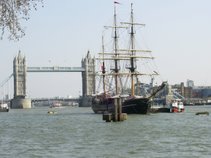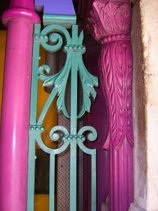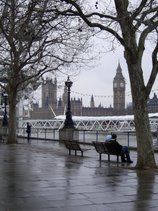In yesterday's blog I described Holborn Viaduct, London; as viewed from what was the “Fleet River valley”. If you climb up the stairs you come to the level of the road over the viaduct, to the west the road goes to Holborn Circus, to the east the City of London.
Bronze Flying Lions stand on guard at each corner of the viaduct. They were sculptured by Farmer & Brindley and manufactured at Elkington & Co foundry. Elkingtons was set up by two cousins, George Richards Elkington (1801 - 1865) and Henry Elkington (1810 - 1852). But the main features are the four larger than life size bronze figures, two on the north and two on the south balustrades.
Farmer & Brindley were responsible for the two figures on the north side. At the west end stands “Fine Art” on the east “Science”.
The “Science” figure is very interesting, most people today would be puzzled by the “pair of balls” held in her hand. But at the time the viaduct was built in the 1860s they were the symbols of the age. She is holding the governor which controlled the speed of early steam engines.
The “Fine Art” figure holds in her hand a sheet of drawing paper and pen. Standing on a columb stands the bust of Athena to represent sculpture.
On the south side of the road there are two bronze figures sculptured by Henry Bursill. On the west end “Commerce” and on the east “Agriculture”.
“Commerce” holds money in her hand and has the key to the City of London at her feet.
“Agriculture” holds a scythe in her right hand and a sheaf of corn in her right.
The viaduct is a true jewel and monument to the Victorian age.
Click here to see YesBut's Image of the day - and leave your caption.















